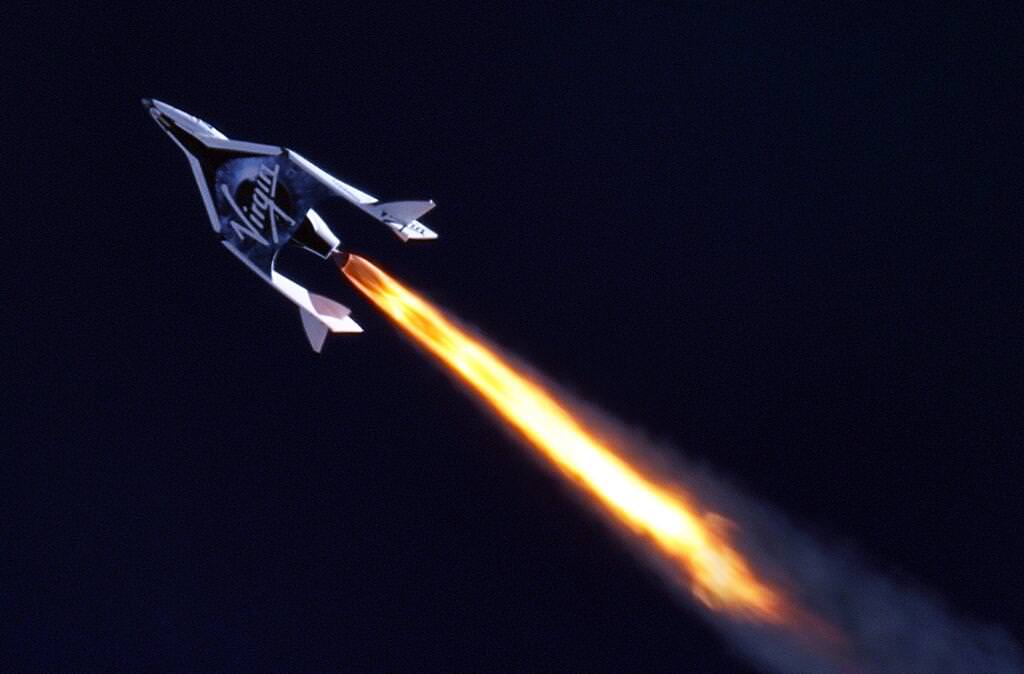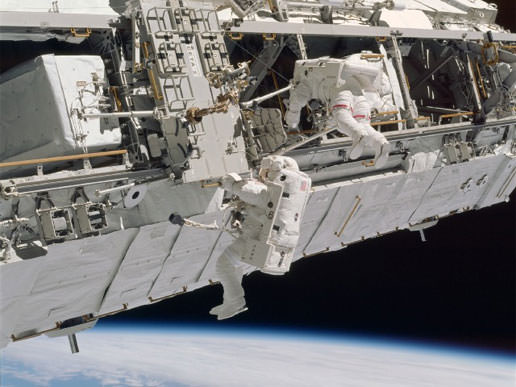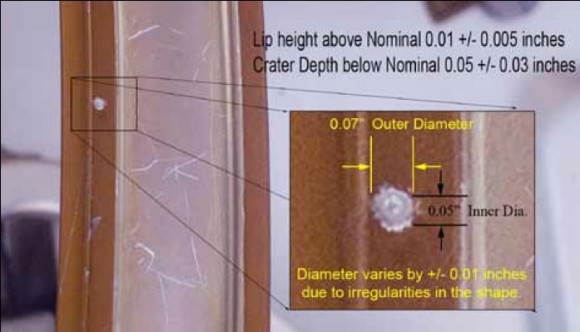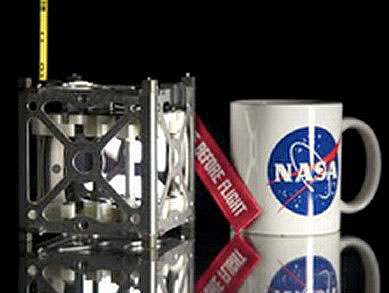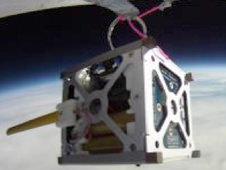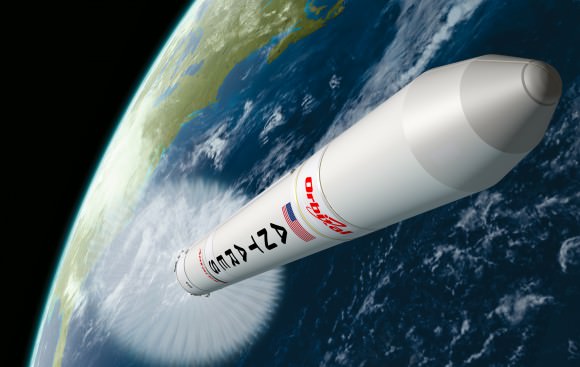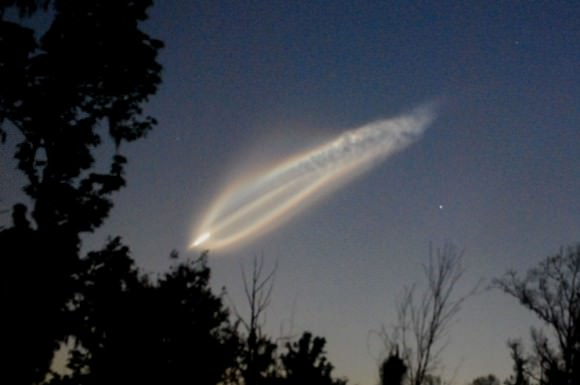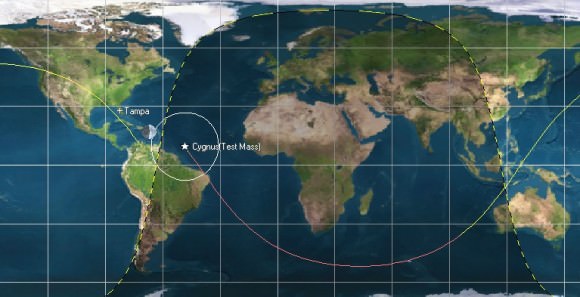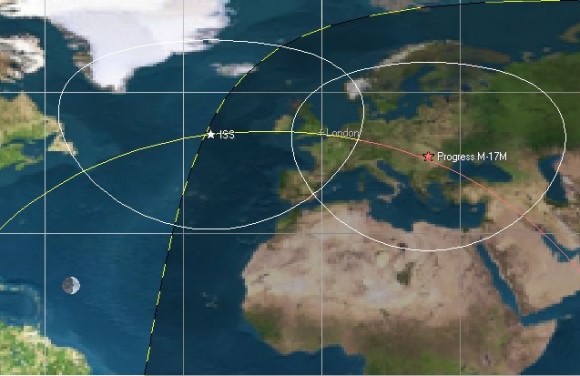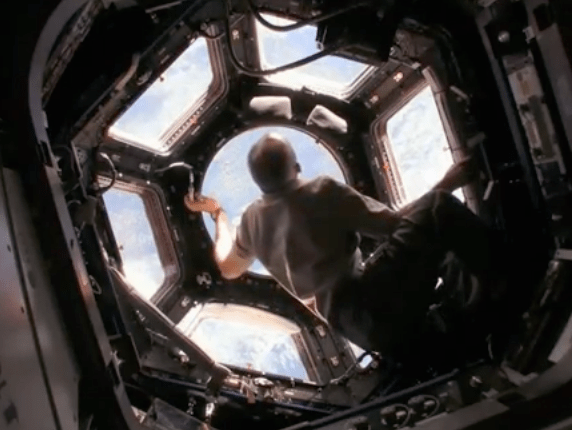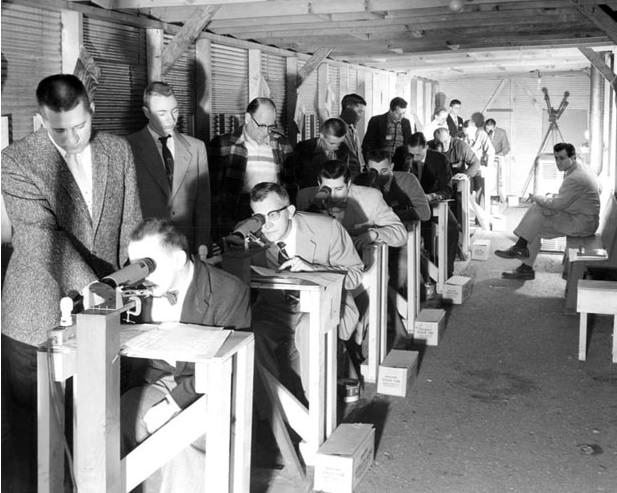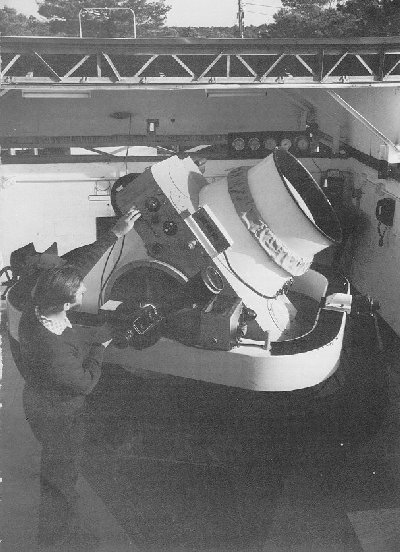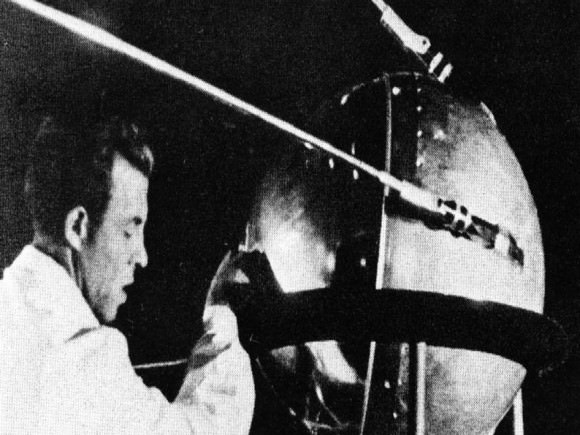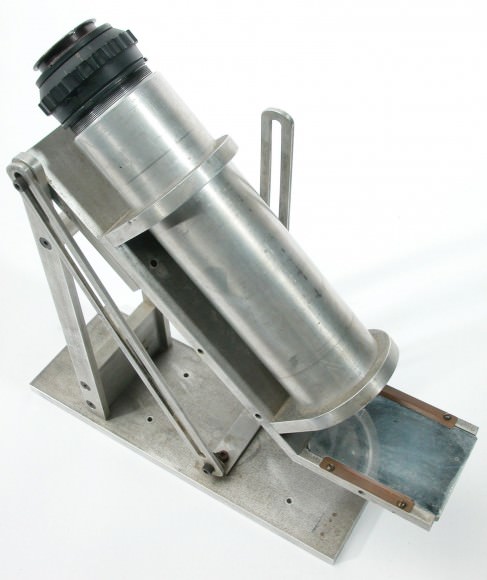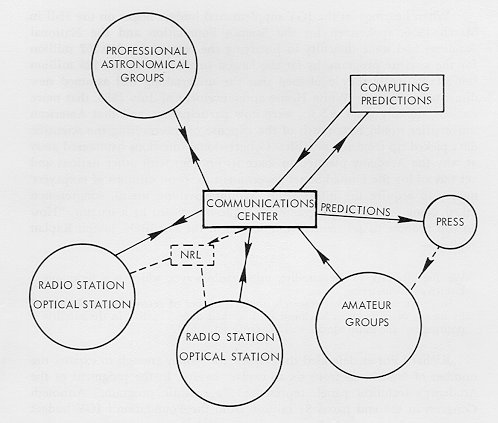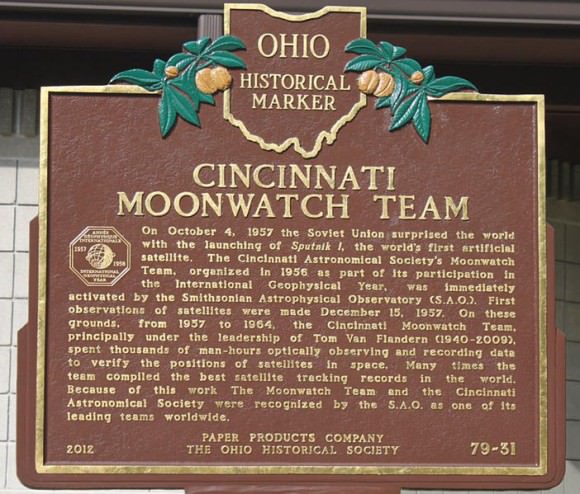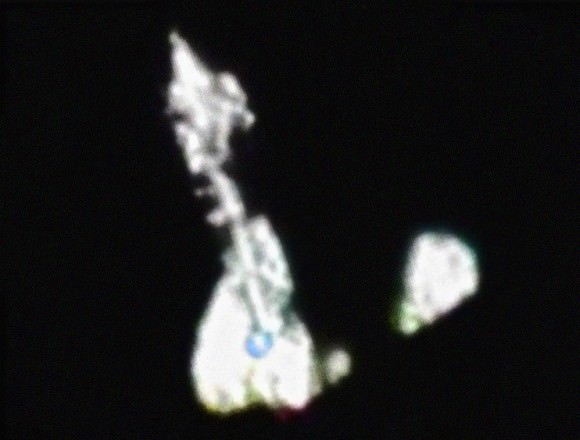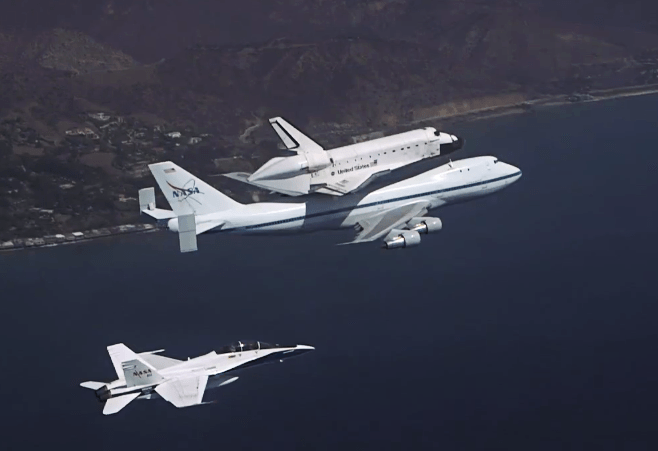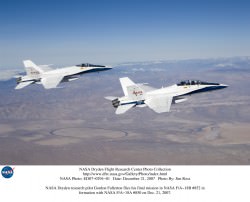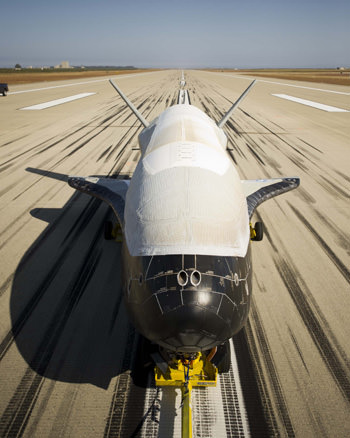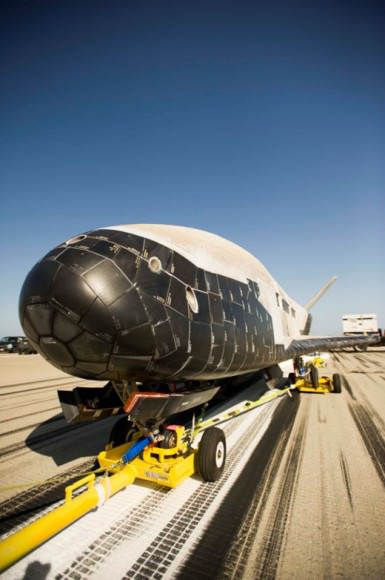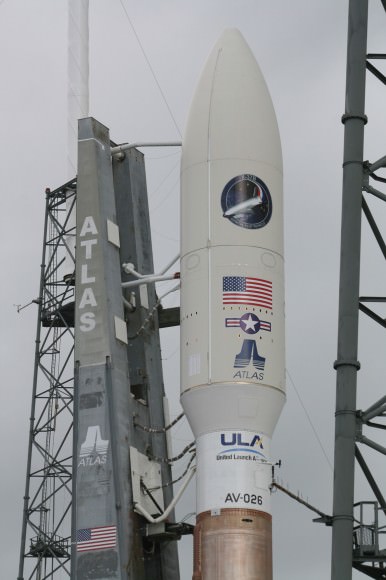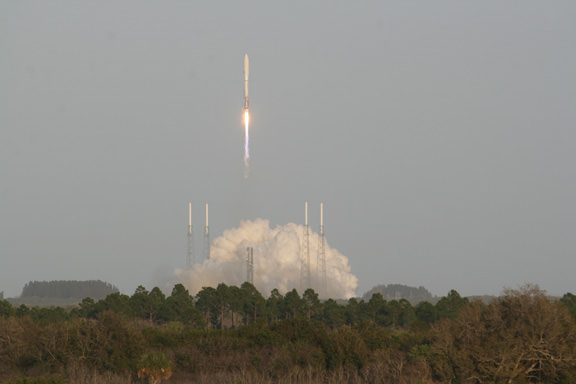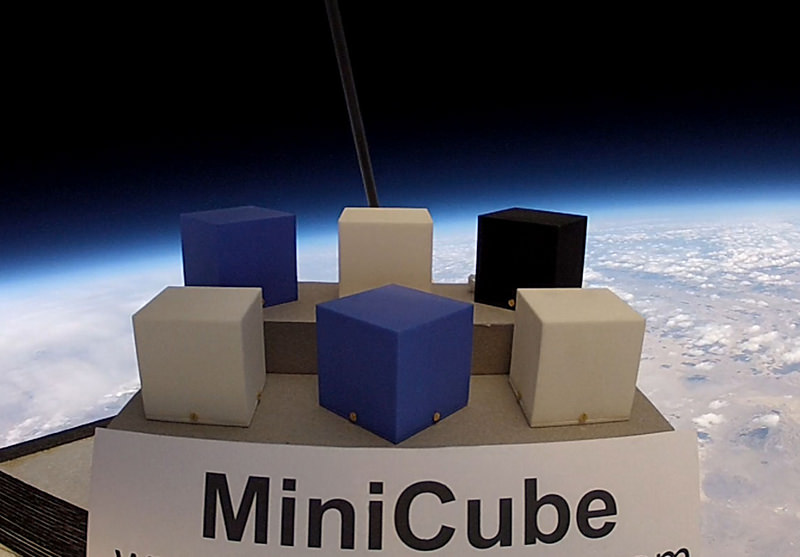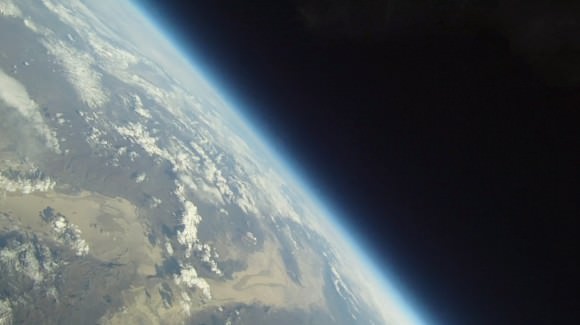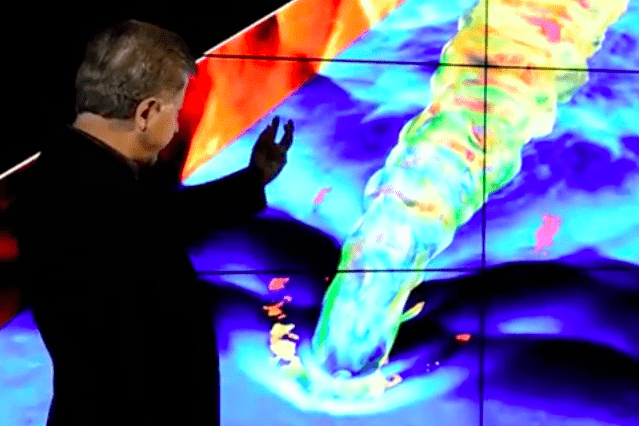SpaceShipTwo fires her rocket motor in flight for 1st time on April 29, 2013. Credit: MarsScientific.com
Updated with more Photos & Video[/caption]
In a momentous and long awaited day in spaceflight, Virgin Galactic’s SpaceShipTwo (SS2) commercial spaceliner named “Enterprise” lit up her hybrid rocket engines in flight and reached supersonic speeds for the first time in history, today, Monday, April 29, 2013 – in the skies over the Mojave Desert in California.
“What a feeling to be on the ground with all the team in Mojave to witness Virgin Galactic go faster than the speed of sound,” wrote Virgin Galacic founder and owner, billionaire Sir Richard Branson, a short while ago.
Branson wants to bring the incomparable joys of human spaceflight– including weightlessness and spectacular views of the Earth’s curvature- to the masses. Thus making science fiction fantasies of the future like “2001: A Space Odyssey” and “Star Trek” a reality – TODAY!
“This is a momentous day and the single most important flight test to date for our Virgin Galactic program,” said Branson from the Mojave Air and Space Port. “What a feeling to be on the ground with all the team in Mojave to witness Virgin Galactic go faster than the speed of sound.”
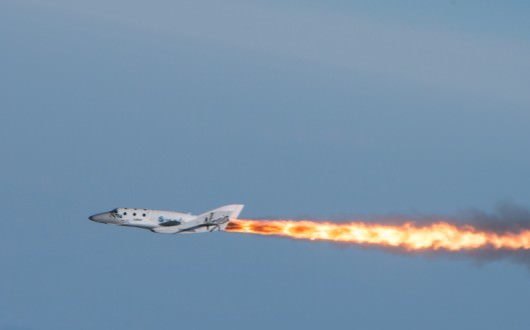
The SpaceShipTwo test of Virgin Spaceship Enterprise was conducted by builder Scaled Composites, led by famed aerospace engineer Burt Rutan, and Virgin Galactic.
With Scaled Composites test pilots Mark Stucky and Mike Alsbury at the helm, the engine burn lasted about 16 seconds, exactly as planned and achieved a speed of Mach 1.2 – breaking the sound barrier!
Watch this video of today’s SS2 rocket test flight:
The test flight began at about 7:02 a.m. local California time as SpaceShipTwo took off from Mojave strapped to the belly of the WhiteKnightTwo (WK2) mothership.
SS2 was released from the mothership at an altitude of 47,000 feet (14 km) some 45 minutes into the flight.
“The pilots triggered ignition of the rocket motor, causing the main oxidizer valve to open and igniters to fire within the fuel case. At this point, SS2 was propelled forward and upward to a maximum altitude of 55,000 feet [17 km],” said Virgin Galactic in a statement.
SS2 is powered by RocketMotorTwo, developed by Sierra Nevada Corporation – which is also constructing the manned DreamChaser mini shuttle ‘space taxi’ under contract to NASA and aiming to restart launches of American astronauts from American soil to low Earth orbit and the ISS.
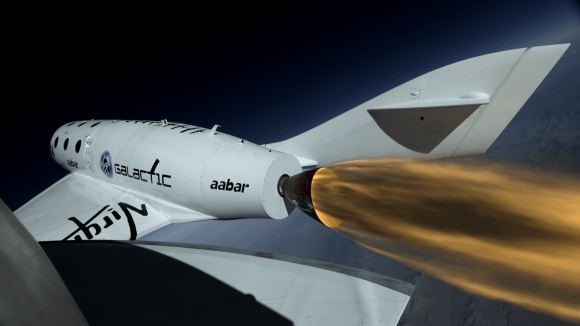
“The first powered flight of Virgin Spaceship Enterprise was without any doubt, our single most important flight test to date,” said Branson, who watched the flight from the grounds of Mojave.
The entire fight lasted about an hour with SS2 gliding back for a safe landing at the Mojave Air and Space Port to conclude the history making flight.
Until today’s engine firing, the SS2/WK2 aerial test flight program had been limited to captive carry and landing drop tests.
Branson’s near term goal is for SpaceShipTwo to fly to space – commonly defined as 62 miles (100 km) altitude – for the first time before year’s end, validate the vehicle with a rigorous test flight program of gradually expanding the flight envelope to insure full operability and safety and then carry the first revenue paying passengers to space thereafter from Spaceport America in New Mexico.
“For the first time, we were able to prove the key components of the system, fully integrated and in flight. Today’s supersonic success opens the way for a rapid expansion of the spaceship’s powered flight envelope, with a very realistic goal of full space flight by the year’s end. We saw history in the making today and I couldn’t be more proud of everyone involved.”
Rumors that this rocket firing test flight was imminent had reached a fever pitch over the past few days, stoked by broad hints in open messages from Branson himself. So, a large group of Virgin employees and space enthusiasts were present today to witness the momentous event (see photos).
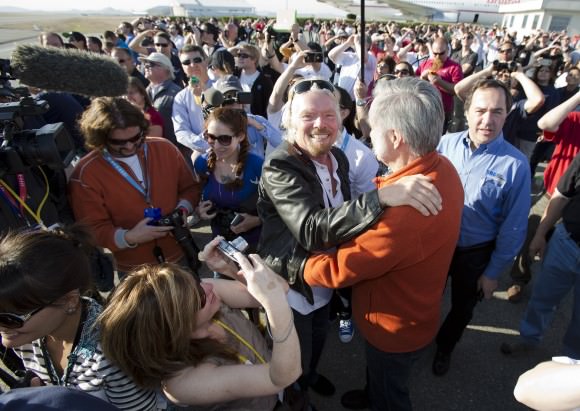
In the not too distant future, the purpose of SS2 is for everyday folks – not just highly trained astronauts – to experience spaceflight and out of this world views of the Earth below and the heavens above.
Eventually, human spaceflight could be as commonplace as flying aboard a commercial jetliner is today.
SpaceShipTwo can carry 8 people total; including a crew of two pilots and six passengers on suborbital missions to space.
Although SS2 cannot go into Earth orbit, Branson hopes that future varients will achieve orbit.
Branson himself will fly aboard the first commercial SS2 flight. Over 500 people have already plucked down over $200,000 to reserve the unprecedented choice seats.
“Like our hundreds of customers from around the world, my children and I cannot wait to get on board this fantastic vehicle for our own trip to space and am delighted that today’s milestone brings that day much closer,” said Branson.
The Commercial Spaceflight Federation quickly lauded the Virgin Galactic team and issued this statement:
“The Commercial Spaceflight Federation congratulates the team at Virgin Galactic and Scaled Composites for the first powered test flight of SpaceShipTwo today,” said CSF President Michael Lopez-Alegria.
“This incredible achievement is the direct result of the hard work and dedication by these two companies, as well as by RocketMotorTwo developer Sierra Nevada Corporation. Because of their efforts, we are one step closer to achieving safe, routine, and cost-effective access to space that will create abundant opportunities for space-based research and that will inspire the next generation of engineers and scientists. I applaud the team at Virgin Galactic and Scaled Composites for their accomplishment, and the team at Mojave Air & Space Port for their efforts in creating a professional and safe testing environment.”
In this era of stingy federal funding and slashes to NASA’s budget, commercial spaceflight will play a major and increasing role in bringing down the high costs of access to space as well as enabling an expanding science exploration program and private commercial space exploitation programs to open up the High Frontier.
Other private companies like SpaceX and Orbital Sciences are already leading the charge with regards to the commercial space exploration race with their Falcon 9 and Antares commercial rockets – now launching crucial cargo for NASA to the International Space Station (ISS) since the retirement of the Space Shuttle orbiters in 2011.

